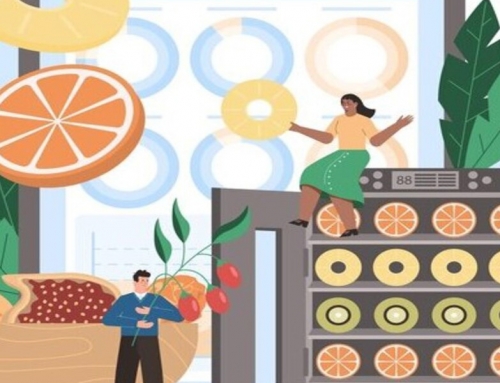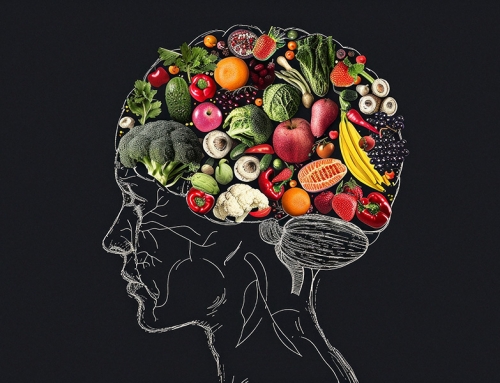In today’s fast-paced world, people often rely on supermarkets to provide them with convenient and accessible options for their daily grocery needs. While these supermarkets offer a wide variety of products to choose from, it’s important for consumers to be mindful of the nutritional content of the items they purchase. Supermarket sales and nutritional information go hand in hand, empowering shoppers to make healthier choices for themselves and their families(1).
The Importance of Nutritional Information
Nutritional information, found on the packaging of most food products, plays a crucial role in helping consumers make informed decisions about what they buy. This information typically includes details about
- serving size,
- calories,
- macronutrients (fat, carbohydrates, and protein), and
- essential vitamins and minerals.
It can also highlight any allergens or additives that might be present in the product. Understanding this information is vital for maintaining a balanced diet and achieving health and wellness goals(1).
India must lead the way in implementing a strong Front-of-Package Labeling (FOPL) system and enacting rigorous legislative laws to achieve global leadership and SDG 2030 targets. The FSSAI’s FOPL designs are tailored to empower Indian consumers and protect them from the adverse health impacts of highly processed foods (2).
How Supermarkets Support Informed Choices
India is witnessing a notable increase in the consumption of Ultra Processed Foods (UPF), with the related industry growing at a rapid annual rate of 40%. This places India at the 10th position in per capita spending on fast food. A study revealed that nearly half of the products (49%) featured nutrition marketing. This marketing included health claims (8.6%), nutrient content claims (75.7%), statement of facts (67.1%), and structure/function claims (5.8%) (3).
Supermarkets are aware of their role in promoting healthier eating habits, and many have taken steps to help customers access nutritional information easily. Here are some ways they support informed choices:
Nutritional Labels: Most packaged food products have nutritional labels that provide standardized information, making it easier for customers to compare different items. This helps shoppers identify products that align with their dietary needs and goals(2).
Healthy Eating Zones: Many supermarkets have designated areas in their stores for healthier options. These sections often include products that are lower in calories, saturated fats, and added sugars. They may also offer organic, gluten-free, or vegan alternatives for those with specific dietary preferences or requirements.
Educational Materials: Supermarkets may provide brochures, posters, or online resources to educate customers about reading nutritional labels and making healthier choices. These materials can help individuals understand terms like “daily value” and “percent daily value” and interpret them in the context of their own diet.
In-Store Dietitians: Some supermarkets employ registered dietitians who offer personalized guidance to shoppers. Customers can consult with these experts to address their specific nutritional concerns or get recommendations for healthier product choices.
Nutritional Apps: Many supermarkets offer apps or online tools that allow customers to scan barcodes and access detailed nutritional information about products. This technology makes it easy to compare items while shopping and can help users stay on track with their nutritional goals(3).
Challenges and Considerations
While supermarkets are working to promote informed choices, there are still challenges to consider. For instance, not all products carry nutritional labels, particularly fresh produce, which comprises a significant portion of a healthy diet. In such cases, customers might need to do their own research or rely on resources provided by the supermarket, such as in-store dietitians.
Additionally, it’s important for consumers to be critical of the information they encounter. Nutritional labels are valuable, but they can also be misleading if misunderstood or taken out of context. Shoppers should pay attention to serving sizes, ingredient lists, and daily value percentages to make the most informed decisions.
In conclusion, supermarket sales and nutritional information are intertwined, offering consumers the tools they need to make healthier choices for themselves and their families. India’s initiative in implementing Front-of-Package Labeling (FOPL) sets a crucial example in promoting healthier consumption. As supermarkets continue to prioritize health and wellness, it is up to shoppers to utilize the available resources and educate themselves on how to read and interpret nutritional information effectively. By doing so, individuals can transform their supermarket trips into opportunities for better nutrition and overall well-being(5,6,7).
References:
- Brinkerhoff, K. M., Brewster, P. J., Clark, E. B., Jordan, K. C., Cummins, M. R., & Hurdle, J. F. (2011). Linking supermarket sales data to nutritional information: an informatics feasibility study. AMIA … Annual Symposium proceedings. AMIA Symposium, 2011, 598–606.
- Singh, S. K., Taillie, L. S., Gupta, A., Bercholz, M., Popkin, B., & Murukutla, N. (2022). Front-of-Package Labels on Unhealthy Packaged Foods in India: Evidence from a Randomized Field Experiment. Nutrients, 14(15), 3128. //doi.org/10.3390/nu14153128
- Botelho, A. M., Milbratz de Camargo, A., Medeiros, K. J., Irmão, G. B., Dean, M., & Fiates, G. M. R. (2020). Supermarket Circulars Promoting the Sales of “Healthy” Foods: Analysis Based on Degree of Processing. Nutrients, 12(9), 2877. //doi.org/10.3390/nu12092877
- Saleem, S. M., Bhattacharya, S., & Deshpande, N. (2022). Non-communicable diseases, type 2 diabetes, and influence of front of package nutrition labels on consumer’s behaviour: Reformulations and future scope. Diabetes & Metabolic Syndrome: Clinical Research & Reviews, 16(2), 102422. //doi.org/10.1016/j.dsx.2022.102422
- Cawley, J., Sweeney, M., Sobal, J., Just, D., Kaiser, H., Schulze, W., . . . Wansink, B. (2015). The impact of a supermarket nutrition rating system on purchases of nutritious and less nutritious foods. Public Health Nutrition, 18(1), 8-14. doi:10.1017/S1368980014001529
- Jenneson, V. L., Pontin, F., Greenwood, D. C., Clarke, G. P., & Morris, M. A. (2021). A systematic review of supermarket automated electronic sales data for population dietary surveillance. Nutrition Reviews. //doi.org/10.1093/nutrit/nuab089
- Ng, S. W., & Popkin, B. M. (2012). Monitoring foods and nutrients sold and consumed in the United States: dynamics and challenges. Journal of the Academy of Nutrition and Dietetics, 112(1), 41–45.e4. //doi.org/10.1016/j.jada.2011.09.015






Leave A Comment